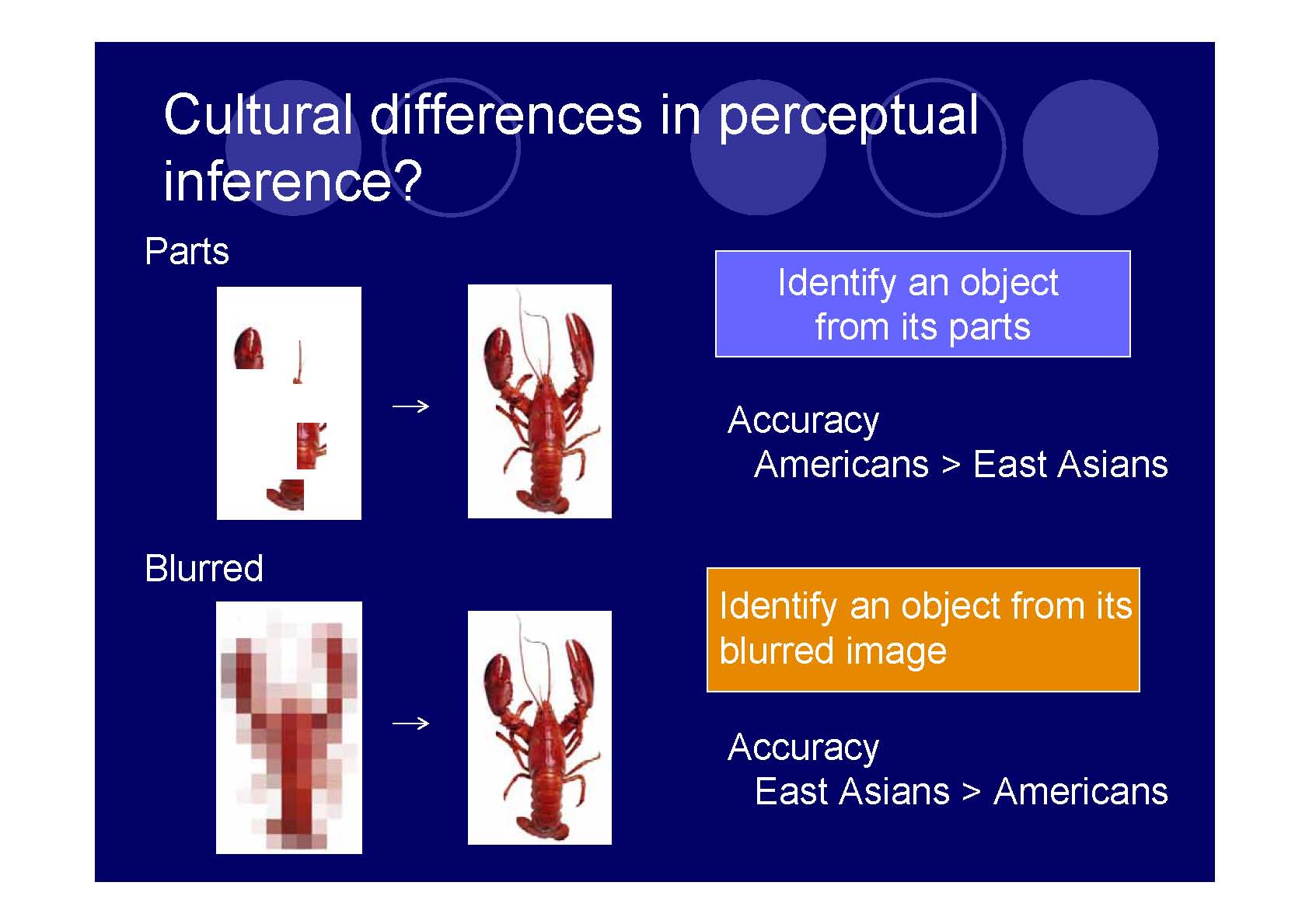

Keiko Ishii
(Hokkaido University)
Culture and perceputural inference: inferring the identity of an object from its parts or its blurred image


On the basis of recent work on culture and cognition, we reasoned that because people engaging in Western cultures tend to attend analytically to separate elements of a perceptual field, they should be quite capable of making perceptual inferences from such elements. In contrast, because those engaging in Asian cultures tend to attend holistically to the whole field, they should be quite capable of making perceptual inferences from gestalt information. In 2 studies 61 Asian and 76 European American participants were presented with either parts of familiar objects (e.g., clock, lobster) or their blurred images and asked to identify the original objects. As predicted, accuracy of perceptual inference depended both on the cue type and the cultural backgrounds of the participants. When part information was presented as a cue, performance in perceptual inference was consistently better for European Americans than for Asians. Interestingly, when gestalt information was used as a cue, performance was no better for Asians than for European Americans. We suggest that to observe the predicted cultural difference in the gestalt cue condition it might be necessary to use stimuli that do not have inherent gestalt. Implications for culture’s influences in perception are discussed.